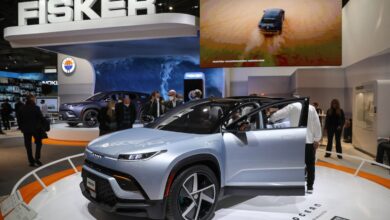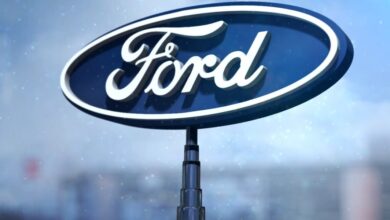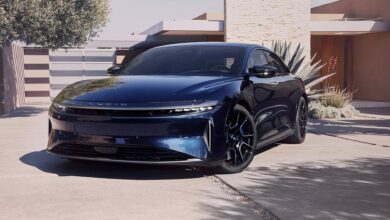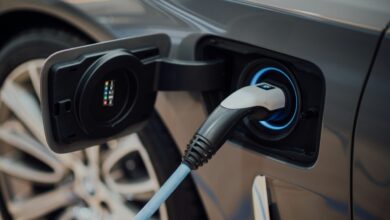Road ahead for Tesla: Why EV sector is struggling, how Musk hopes to negotiate potholes and speed bumps | Explained News
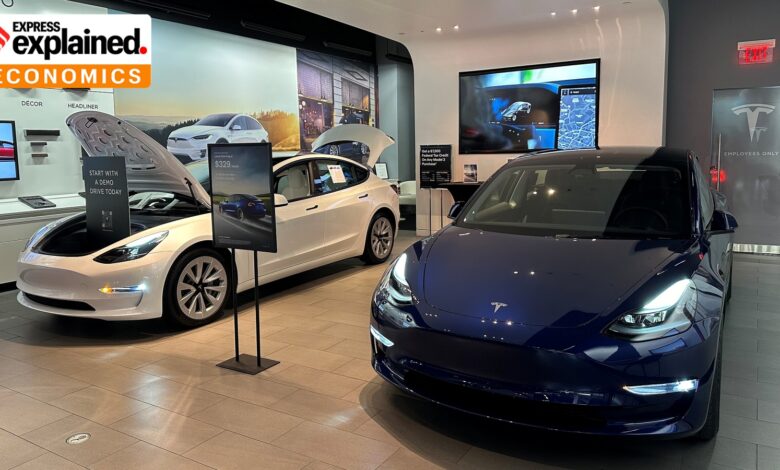
Despite Tesla Inc missing its revenue and earnings targets by a long way, investors seem to have rebooted their faith in the company’s forward guidance after what has been a disastrous quarter for the Texas-based electric vehicle (EV) maker.
Shares surged more than 10% in after-hours trade — despite dismal numbers announced at the crucial January-March earnings, which was presumably the reason why CEO Elon Musk postponed his much-anticipated India visit, which he attributed to “very heavy Tesla obligations”.

The quarterly results announcement on Tuesday (April 23) was crucial given the investor clamour for clarity on the difficulties faced by the company over the last few quarters, including the challenge from Chinese manufacturers, dwindling sales, and the absence of a future pipeline of affordable cars.
Tesla shares have declined 40% this year, impacted by lower production and deliveries.
The numbers were dismal…
Tesla’s revenue in the March quarter fell 9% from a year ago, the first decline in more than four years, and a steeper drop than in 2020, when production stopped due to the Covid-19 pandemic.
Operating profit and adjusted net income were lower than forecast; both were down more than 50% year-on-year. On future guidance on deliveries, Tesla projected “notably lower volume”.
The company has about 28 days of inventory of existing products — the Model 3 compact sedan, Model S mid-size sedan, Model X luxury SUV, Model Y compact SUV, and the new Cybertruck. That is an all-time high.
About 2,600 employees have been laid off at its Texas factory, simply because demand was lower than production. Recently, 4,000 Cybertrucks were recalled after some users raised concerns over a faulty accelerator pedal.
…But stock reaction was surprising
Following the earnings call and guidance, the Tesla stock rose sharply in after-hours trading. There were three main reasons for this.
The company said it would accelerate the launch of more affordable vehicles, countering reports earlier this month that these plans would be shelved.
In its shareholder letter, Tesla showed preview images of a ride-hailing feature in its app, demonstrating how a Tesla robotaxi could work, something that Musk has been very optimistic about.
Also, revenue from software, mainly from Tesla’s full self-driving or FSD vertical, has surged and is now perceived as a potential money spinner for the future.
Most analysts had anyway factored in a terrible quarter, so the earning numbers by themselves were not a surprise. The guidance effectively overshadowed the dismal quarterly numbers.
Investors also seem to have overlooked Musk’s poor track record of meeting deadlines and timelines that he sets himself.
The long awaited low-cost model
There is still no mass-market entry-level “low-cost family” car in Tesla’s line-up, something that Musk had identified as the company’s primary mission back in 2006. Its cheapest vehicle, the Model 3 sedan, sells for almost $40,000 (about Rs 33 lakh at the current exchange rate) in the US.
Plans for a low-cost “Model 2”, along with other models in the $25,000 range, is the company’s new pitch now. Earlier this month, Reuters reported that Tesla had scrapped its plans for a cheaper model, which Musk later denied.
“We have updated our future vehicle line-up to accelerate the launch of new models ahead of our previously communicated start of production in the second half of 2025,” Tesla said in its first quarter shareholder release.
On the earnings call, Musk said the timelines for new vehicles could be in early 2025, if not later this year. Tesla declined to give details on when the cheap EV will debut, although Musk did say that the company would talk more about these vehicles on August 8, when the robotaxi is to be unveiled.
Slowing EV sector, Tesla’s specific problems
The EV industry at a fork-in-the-road moment, and given Tesla’s outsized impact on the global EV sector, it is particularly impacted. The steady slowdown in EV demand across key markets, including North America and Western Europe, has started to expose a major overcapacity problem at Tesla’s factories such as Shanghai and Berlin.
Also, Chinese EV makers are fast closing the gap with Tesla. Shenzhen-based BYD eased past Tesla to become the top seller of electric cars in the last three months of 2023, boosted by a surge in sales of its smaller, low-cost EVs such as Seagull and Dolphin.
In October, GM announced it would cut production of EVs, citing slowing demand. In January, Ford slashed production of its electric pickup truck by half.
Tesla, which has the most widespread and dependable charging network in the US, and in parts of Europe and China, has used this network as a walled garden for its owners across markets. It has now been forced to partly open its 45,000-charger network in the US to all electric car models by the end of 2024 in lieu of gaining access to $7.5 billion in subsidies.
This effectively negates the advantage Tesla has had in terms of developing and maintaining a super-efficient fast charging network. Tesla could face these challenges in its other market too.

